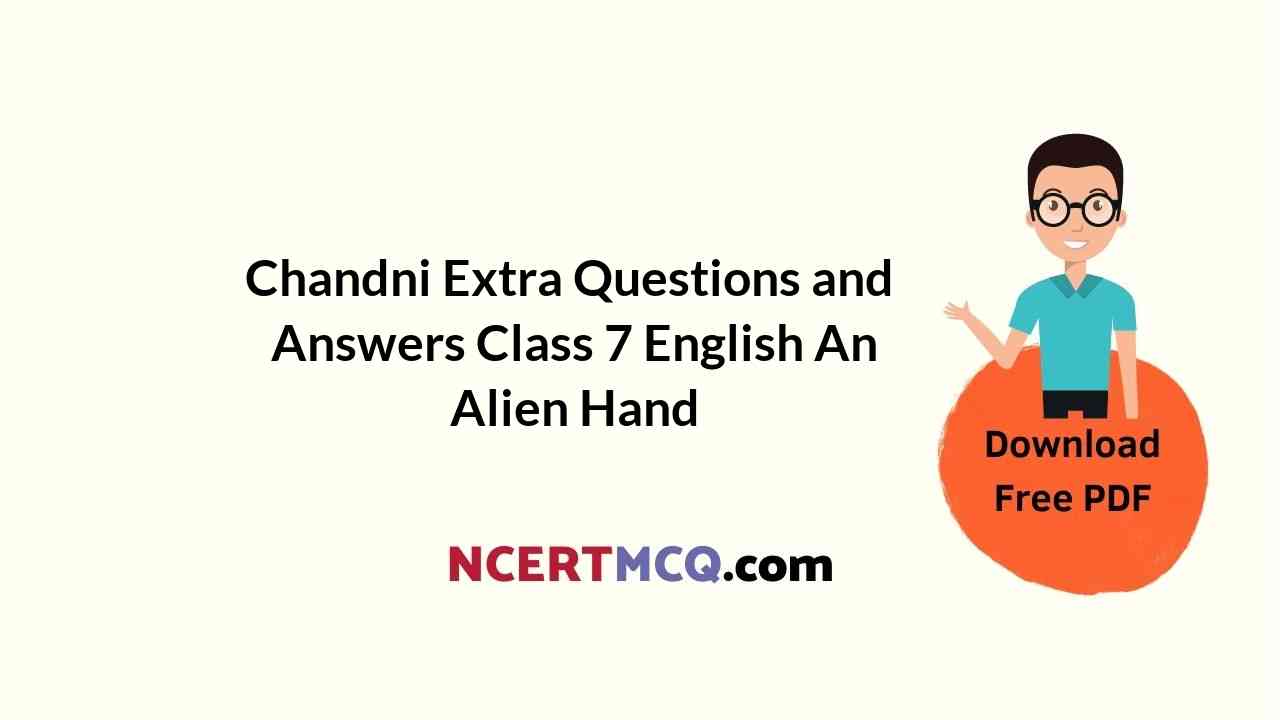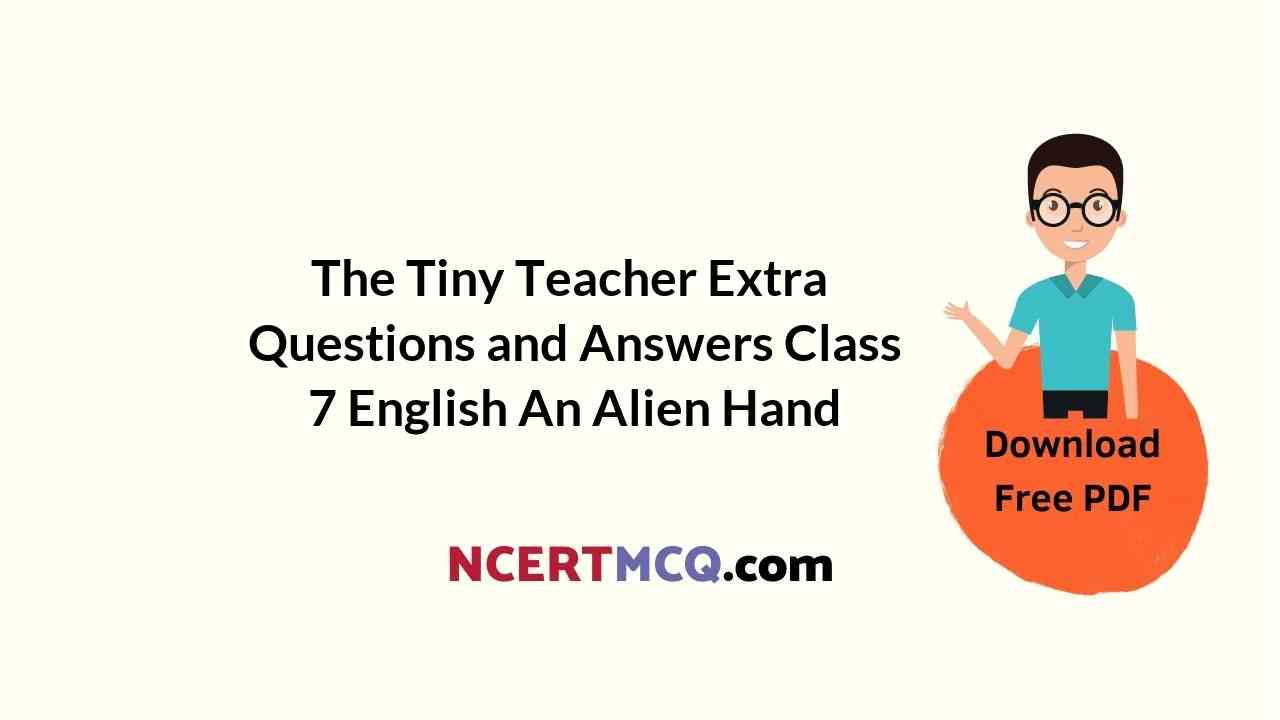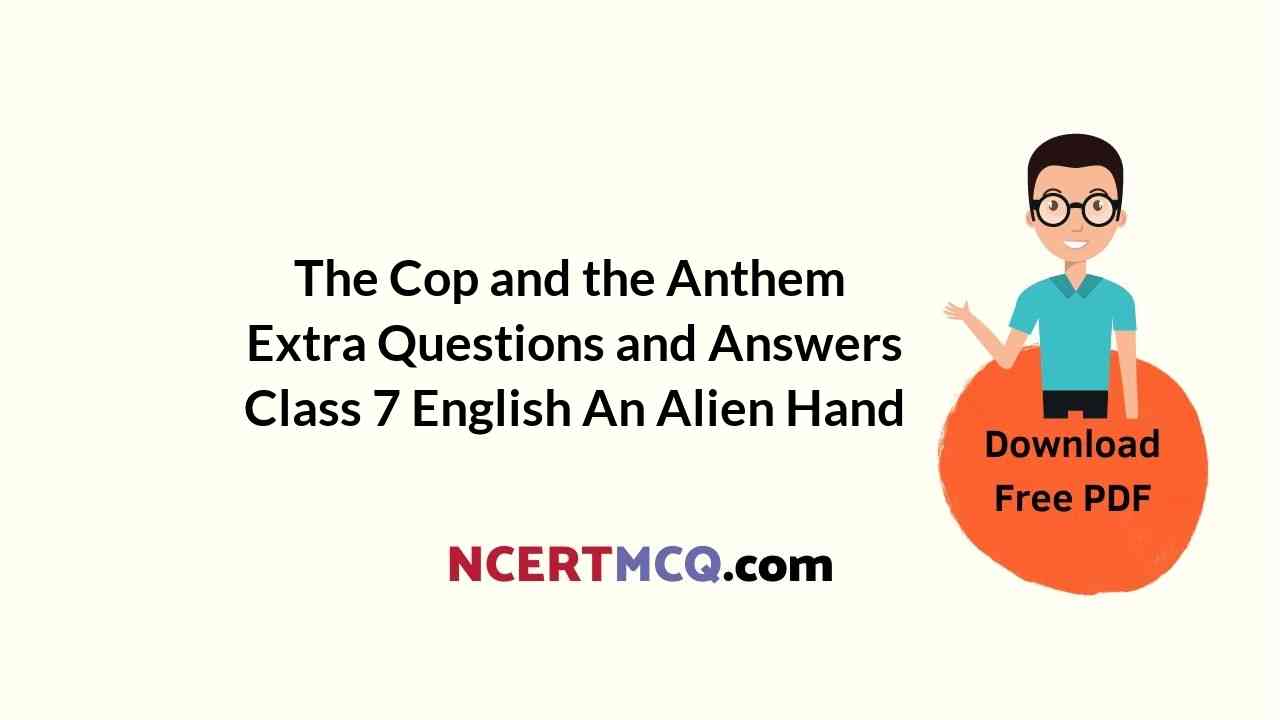Here we are providing Online Education for A Tiger in the House Extra Questions and Answers Class 7 English An Alien Hand, Extra Questions for Class 7 English was designed by subject expert teachers. https://ncertmcq.com/extra-questions-for-class-7-english/
We have created the most comprehensive NCERT Solutions for Class 7 English Chapter 9 A Tiger in the House Question Answer. These Questions and Answers are help to score more marks in your board Exams.
Online Education for A Tiger in the House Extra Questions and Answers Class 7 English An Alien Hand
A Tiger in the House Extra Questions and Answers Short Answer Type
A Tiger In The House Extra Questions Class 7 Question 1.
Where did grandfather found Timothy?
Answer:
Grandfather found Timothy in the Terai jungle near Dehradun hiding among the intricate roots of a banyan tree.
A Tiger In The House Questions And Answers Pdf Class 7 Question 2.
How did Mahmoud feed him?
Answer:
Mahmoud, the cook fed him milk with a feeding bottle.
A Tiger In The House Questions And Answers Class 7 Question 3.
What was Timothy’s diet?
Answer:
Timothy’s diet included milk, raw mutton and cod liver oil. He followed diet of pigeons and rabbits.
Extra Questions Of A Tiger In The House Class 7 Question 4.
Who were the other companions of Timothy at grandfather’s house?
Answer:
The companions of Timothy were Toto, the monkey, and a small mongrel puppy.
A Tiger In The House Class 7 Questions And Answers Question 5.
How was his relationship with the puppy?
Answer:
Timothy initially was afraid of the puppy later he became friendly with him and allowed him to crawl on his back.
A Tiger In The House Class 7 Extra Questions Question 6.
How did Timothy play with the narrator?
Answer:
The narrator told that with his bright eyes, he tried to come close. He rolled over on his back and kick with delight. It pretended to bite his ankles.
A Tiger In The House Class 7 Question Answer Question 7.
How had Timothy changed with time?
Ans.
Timothy grew into an adult tiger, and it became difficult to go for walk. People were scared of him. It became difficult to remove him from recliner where he prefer to take rest.
A Tiger In The House Class 7 Question 8.
What Was the prediction of grandmother regarding Mahmoud?
Answer:
Grandmother was scared one day Timothy would kill Mahmoud.
A Tiger In The House Lesson Question Answers Class 7 Question 9.
Why was Timothy chained up?
Answer:
Timothy was chained up because he became fierce and hunts chickens at night.
A Tiger In The House Question Answer Class 7 Question 10.
What was the arrangement made for Timothy’s shifting?
Answer:
Grandfather reserved a first class compartment for himself and Timothy to take him to Lucknow zoo.
Tiger In The House Extra Questions Class 7 Question 11.
What were the reactions of zoo authorities?
Answer:
Zoo authorities were happy to receive a well-fed and civilized tiger as a gift.
The Tiger In The House Question Answer Class 7 Question 12.
How long did it take grandfather to meet Timothy?
Answer:
Grandfather met Timothy after six months when he went to Lucknow to visit his relatives.
Question 13.
In what way did grandfather make him quiet?
Answer:
Grandfather stroked the tiger’s forehead and tickled his ear whenever he growled. He also smacked him across the mouth.
Question 14.
What scared Timothy away on the cage?
Answer:
Grandfather observed that Timothy was scared away by a leopard.
Question 15.
What was unusual that attracted the attention of visitors and zoo authorities?
Answer:
Visitors and zoo authorities were surprised to see the reunion of grandfather and the tiger.
Question 16.
Why was grandfather eager to meet authorities?
Answer:
Grandfather did not like that Timothy was scared to hell by leopard. Out of concern, he wanted the authorities to change cage for Timothy.
Question 17.
What was the revelation made by the keeper?
Answer:
The keeper revealed that Timothy died two months ago because of pneumonia.
Question 18.
What was the reaction of the grandfather on learning the death of Timothy?
Answer:
Grandfather was scared yet he gently bade goodbye to the tiger.
A Tiger in the House Extra Questions and Answers Long Answer Type
Question 1.
‘Love begets love’. How far this phrase applies to the story?
Answer:
Grandfather was fond of bringing home the deserted animals. Once he brought a tiger cub. He fed it up with a milk bottle. He coexisted and played with other animals, Toto, the monkey and a small mongrel puppy. Until he became threat to his surrounding, he was kept at home. When an unknown tiger was loved and patted by the grandfather, he was tamed as well. He responded to the love.
Question 2.
What values of grandfather impressed you the most? Which ones would you like to imbibe?
Answer:
The narrator portrayed grandfather with an essence of humanity. His generosity and kindness was the most impressive ones. He was caring enough to meet Timothy even in zoo. He asked authorities to change his cage because he was afraid of a leopard. His love and care impressed the zoo authorities. They were scared of the dangerous tiger into a meek one who allows an unknown man to pat and tickle his ears, had shocked them.
Question 3.
Where was the tiger cub hiding when Grandfather found him?
Grandfather found the tiger cub was hiding among the intricate roots of a banyan tree.
(i) What did Toto do to entertain Timothy?
(ii) What did he do when Timothy lost his temper?
Answer:
(i) Toto pulled Timothy by the tail to entertain him.
(ii) When Timothy lost his temper, Toto climbed up the curtains.
Question 4.
“I became one of the tiger’s favourites”. Who is “I” in the statement? Why did he think so?
Answer:
‘I’ stands for the narrator, Ruskin Bond. He thought so because Timothy would come closer to him, roll . over on his feet and pretended to bite his ankles.
Question 5.
Where was Timothy most comfortable during the day? Where was he slept during the night?
Answer:
Timothy was most comfortable on the long sofa in the drawing room during the day which was his favourite place in the house. He slept at night in the cook’s quarters.
Question 6.
What was grandmother’s prophecy about the.cook? Did it come true?
Answer:
Grandmother’s prophecy about that cook was the one day Timothy would make a meal of Mahmoud. It did not come true. However, the tiger had begun to stalk. Mahmoud about the house with a villainous intent.
Question 7.
What made Grandfather decide to transfer Timothy to the zoo?
Answer:
When Timothy was about six month old, he grew less friendly. When out for a walk with the author, he would try to steal away to stalk a cat or someone’s pet dog. Sometimes at night they heard frenzied cackling from the poultry house, and in the morning, feathers were lying all over all verandah. And finally, when he began to stalk Mahmoud about the house with what looked like villianous intent, Grandfather decide to transfer Timothy to the zoo.
Question 8.
Why did Grandfather want Timothy to be put in another enclosure?
Answer:
Grandfather wanted Timothy to be put in another enclosure as the leopard in the next cage would constantly rush at Timothy. Whenever this happened, the frightened Timothy would sink to a comer.
Question 9.
What shocked Grandfather in the end?
Answer:
Grandfather visited the zoo after six months to see Timothy and went to the cage where he was put in ‘ straightly. When Grandfather asked the keeper to transfer Timothy to another cage, he said that the tiger in the cage was not Timothy. He was informed by the zoo keeper that his tiger Timothy had died two months ago, which shocked him in the end.
Extra Questions for Class 7 English
- The Tiny Teacher Extra Questions
- Bringing up Kari Extra Questions
- The Desert Extra Questions
- The Cop and the Anthem Extra Questions
- Golu Grows a Nose Extra Questions
- I Want Something in a Cage Extra Questions
- Chandni Extra Questions
- The Bear Story Extra Questions
- A Tiger in the House Extra Questions
- An Alien Hand Extra Questions








